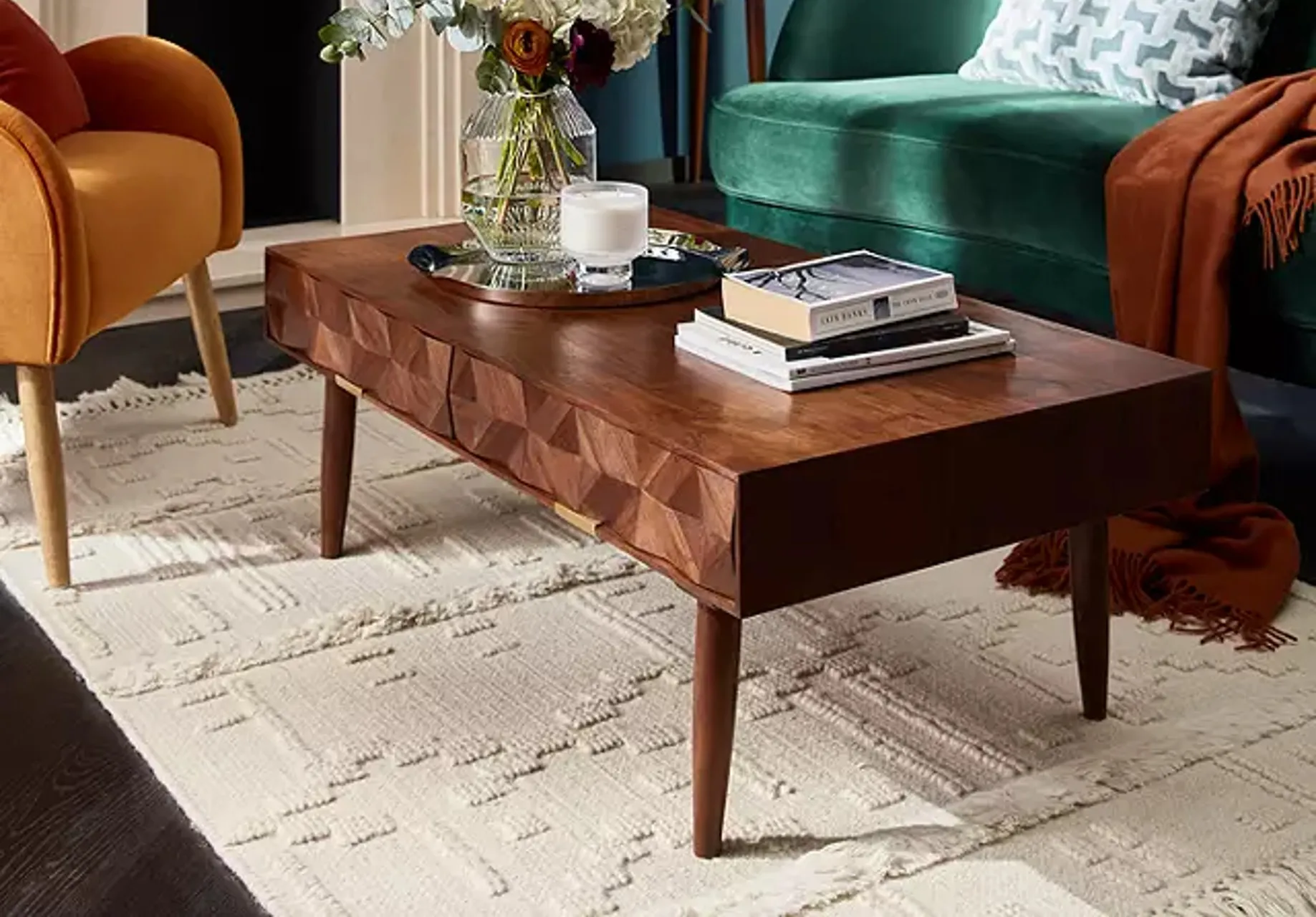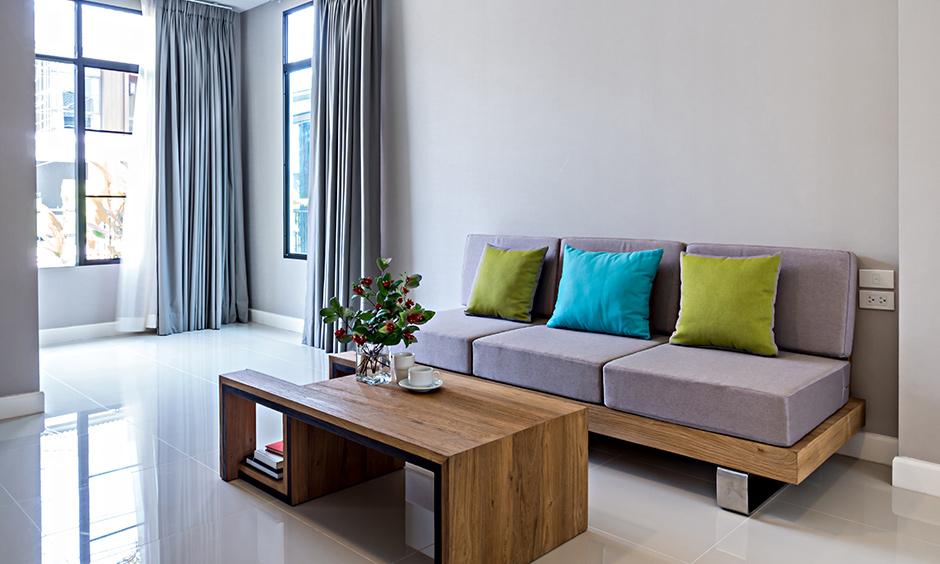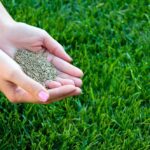Coffee tables are a staple in most living rooms, providing a functional and stylish addition to any home. While the design and shape of coffee tables vary greatly, one of the most important factors to consider is the type of wood used. The type of wood used can have a significant impact on the style, durability, and functionality of the coffee table. In this article, we will explore the pros of different types of wood for coffee tables.
1. Oak Wood Coffee Tables
Oak wood coffee tables are a popular choice among homeowners due to their durability, timeless appeal, and natural beauty. Oak wood is known for its strength and resistance to wear and tear, making it an excellent choice for furniture that will last for years. In addition, oak wood has a unique grain pattern that adds character and elegance to any room.
Another advantage of oak wood coffee tables is their versatility. Whether you prefer a traditional, rustic, or modern style, there is an oak wood coffee table that will match your decor. Oak wood can be stained or painted in a variety of colors and finishes, allowing you to create a customized look that reflects your personal style.
Oak wood coffee tables are also environmentally friendly. Oak trees are a renewable resource, and the use of solid wood furniture reduces the need for synthetic materials that are harmful to the environment.
Overall, if you are looking for a durable, stylish, and eco-friendly coffee table, oak wood may be the perfect choice for you. Its timeless appeal and versatility make it a great investment for any home.

2. Walnut Wood Coffee Tables
Walnut wood coffee tables are a popular choice for those who are seeking a high-quality and durable piece of furniture that will last for years to come. One of the main advantages of walnut wood is its strength and resistance to wear and tear, which makes it an ideal material for coffee tables that are frequently used.
In addition to its durability, walnut wood is also prized for its unique and attractive grain pattern that makes each piece of furniture one-of-a-kind. This natural beauty is complemented by the warm and inviting tones of the wood, which create a cozy and welcoming atmosphere in any room.
Another advantage of walnut wood coffee tables is their versatility. They can be styled to match a range of interior design styles, from contemporary to traditional. Whether you’re looking for a modern minimalist design or a more classic and ornate piece, there is a walnut wood coffee table to suit your needs.
3. Maple Wood Coffee Tables
Maple wood coffee tables have a multitude of advantages that make them a popular choice for homeowners. For starters, maple wood is known for its durability, strength, and resistance to wear and tear. It is also a hardwood, which means it is less likely to scratch or dent, making it ideal for high-traffic areas. Additionally, maple wood has a beautiful natural grain pattern and is available in a variety of finishes, so it can easily match any decor style. Another benefit of maple wood coffee tables is that they are relatively easy to maintain, requiring only occasional dusting and polishing to keep them looking their best. Lastly, because maple wood is a sustainable and renewable resource, it is an eco-friendly choice for those who are environmentally conscious. Overall, maple wood coffee tables are a wise investment that can provide both functionality and aesthetic appeal to any living space.
4. Cherry Wood Coffee Tables
Cherry wood coffee tables are a popular choice among homeowners and interior designers alike. Not only are they stylish and elegant, but they also have many practical benefits. One of the main advantages of cherry wood coffee tables is their durability. Cherry wood is a hardwood that is resistant to wear and tear, making it a great choice for furniture that is used frequently. Additionally, cherry wood has a beautiful natural grain pattern that adds character to any room. Cherry wood coffee tables are also relatively easy to maintain, requiring only occasional polishing or dusting. Finally, cherry wood is a sustainable choice, as it is a renewable resource that can be harvested responsibly. Overall, cherry wood coffee tables are a great investment for any home, offering both beauty and practicality.
5. Mahogany Wood Coffee Tables
Mahogany wood coffee tables offer a timeless and classic look to any living room. The rich, warm tones of mahogany wood create a cozy and inviting atmosphere. Additionally, mahogany wood is a durable and long-lasting material, making it a wise investment for furniture. Mahogany wood coffee tables are also relatively easy to maintain with regular dusting and occasional polishing.
Moreover, mahogany wood is a sustainable and eco-friendly option as it is a renewable resource. It also has a high resistance to moisture and termite damage. Mahogany wood coffee tables come in a variety of styles, from traditional to modern, and can be paired with different decor styles. With all of these benefits, it’s easy to see why mahogany wood coffee tables are a popular choice for homeowners and interior designers alike.
6. Reclaimed Wood Coffee Tables
Reclaimed wood is a popular choice for coffee tables due to its unique character and sustainability. Reclaimed wood is salvaged from old buildings, barns, and other sources, giving it a distinctive look and feel. Additionally, reclaimed wood is environmentally friendly, as it reduces waste and repurposes materials that would otherwise be discarded.
7. Pine Wood Coffee Tables
Pine wood is a lighter wood that is known for its affordability and versatility. Pine wood has a natural grain pattern that adds warmth and character to any living room. Additionally, pine wood is easy to work with, making it a great choice for DIY coffee table projects.

8. Teak Wood Coffee Tables
Teak wood is a popular choice for outdoor coffee tables due to its durability and resistance to weather and insects. Teak wood has a natural color and grain pattern that adds warmth and character to any outdoor living space. Additionally, teak wood requires little maintenance, making it a great choice for a coffee table that will be used outside.
Final Thought
In conclusion, the type of wood used for a coffee table can greatly impact its style, durability, and functionality. Oak, walnut, maple, cherry, mahogany, reclaimed, pine, and teak are all great choices for coffee tables, depending on your personal preferences and needs. By considering the pros of each type of wood, you can make an informed decision and choose the perfect coffee table for your home.






